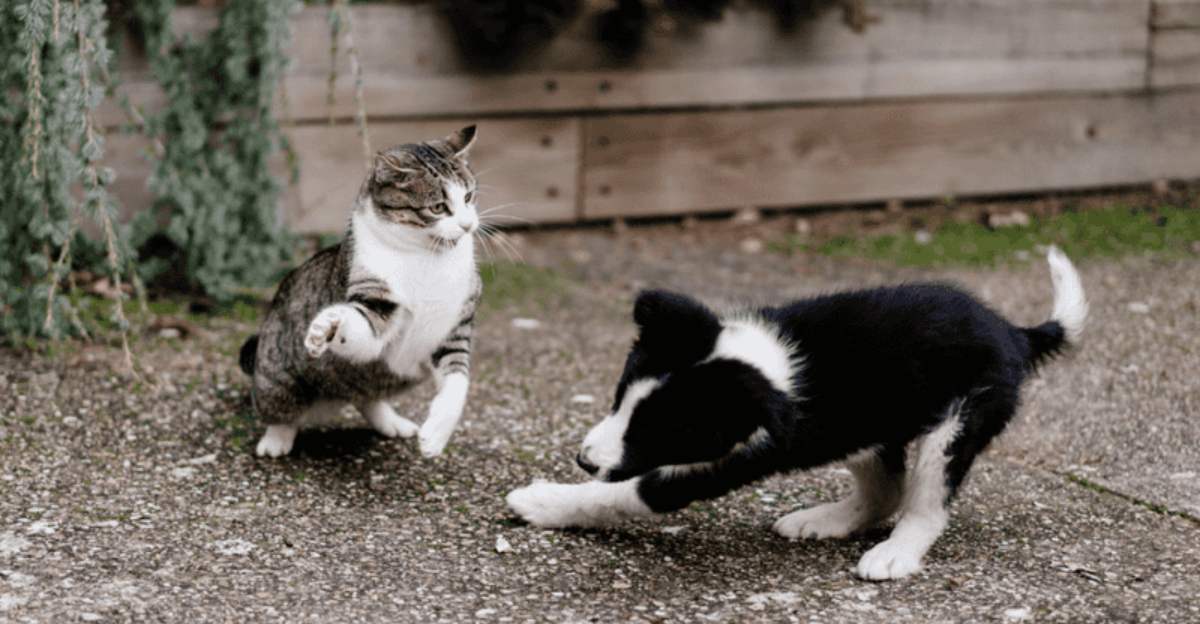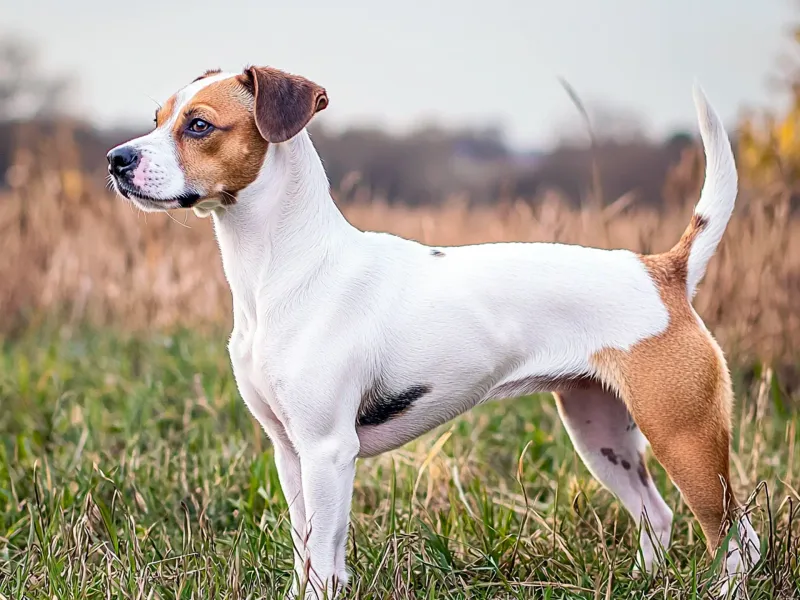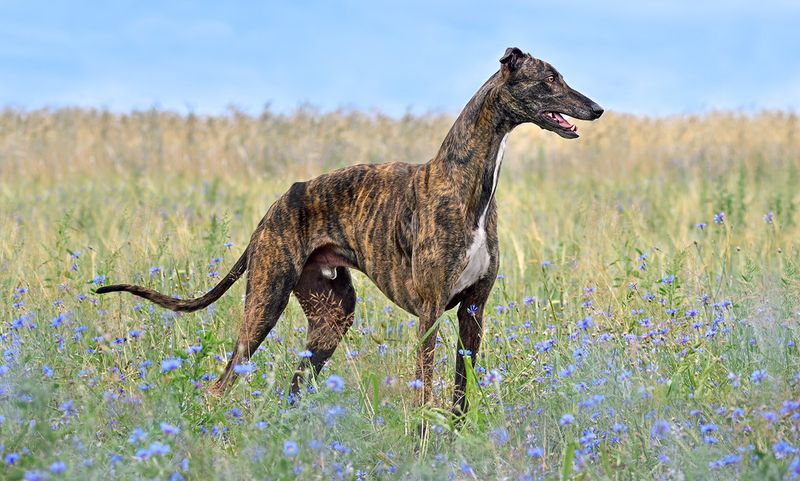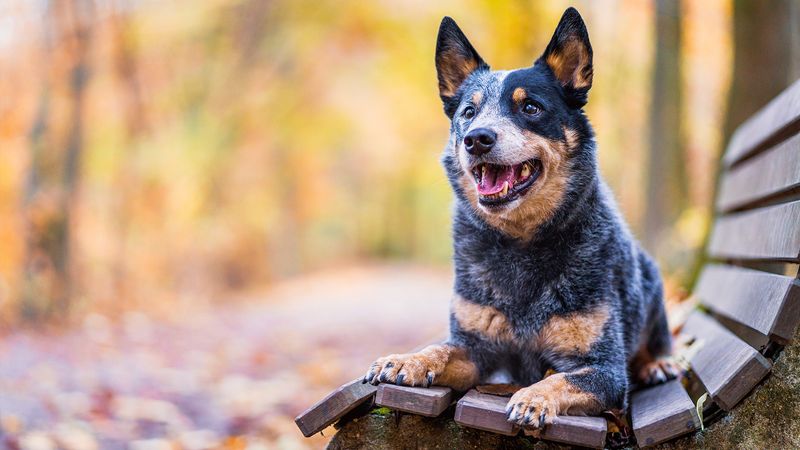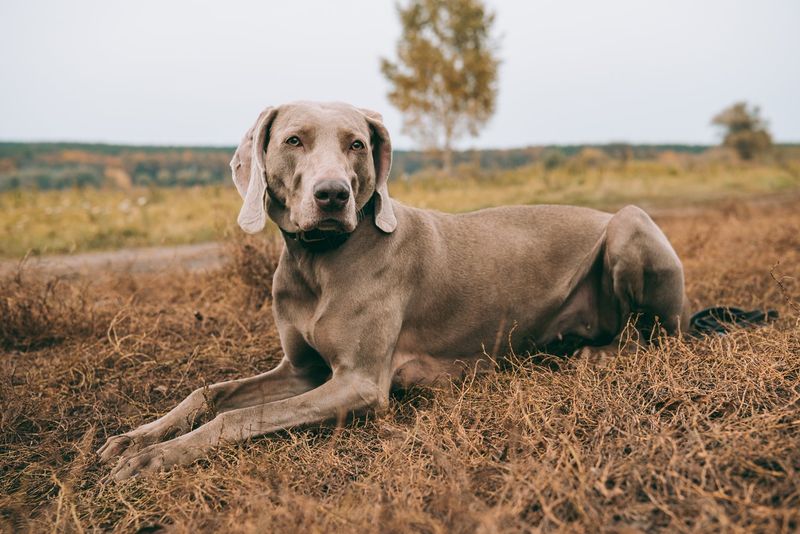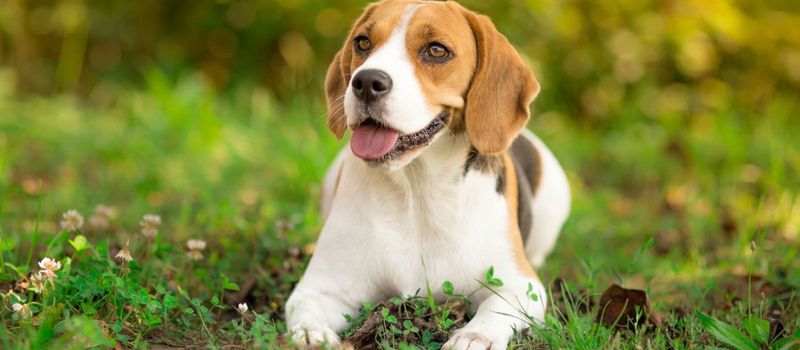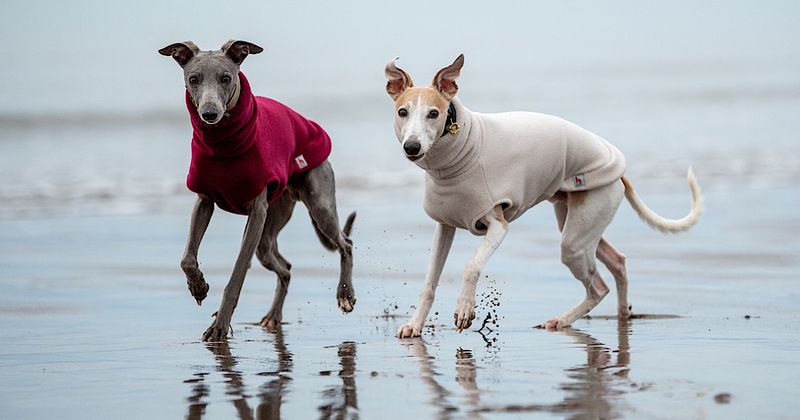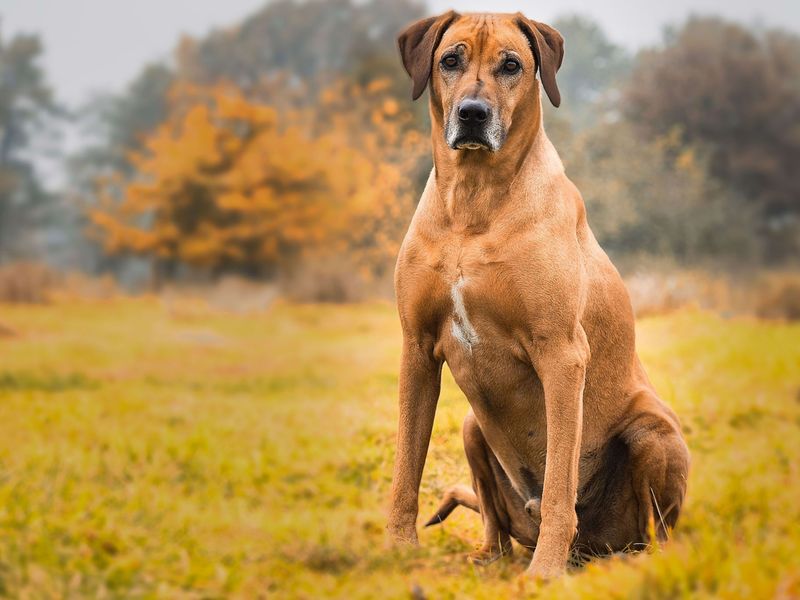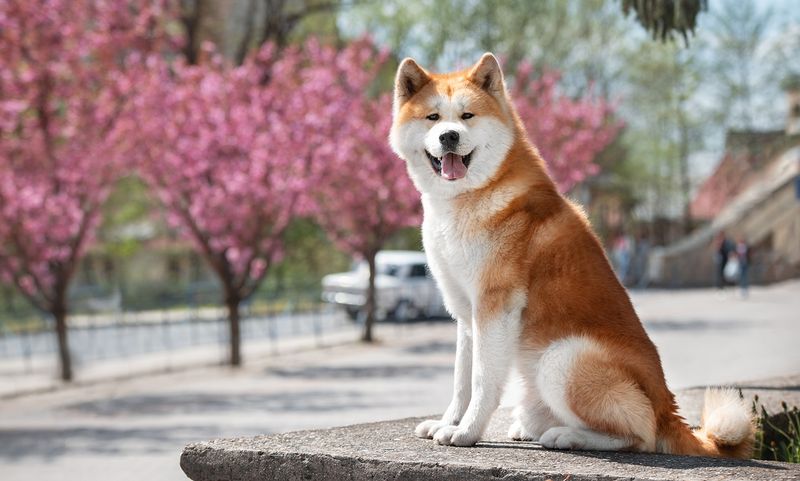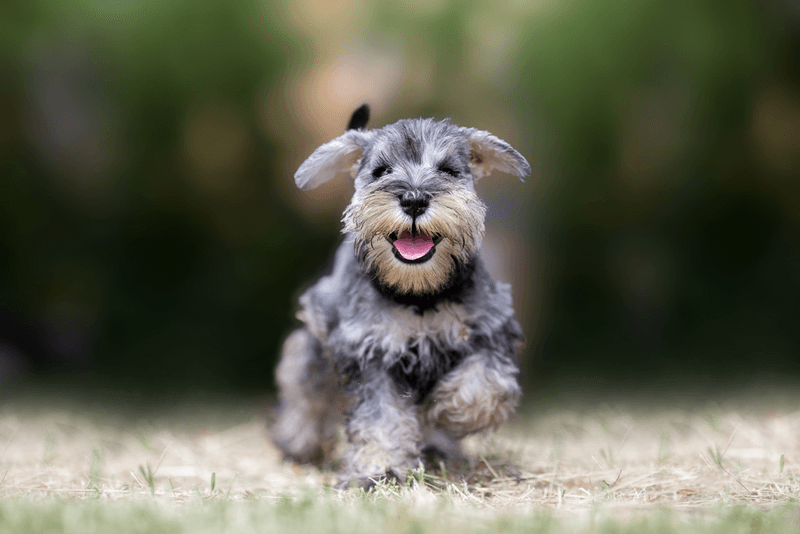📖 Table of Content:
Dogs and cats have a legendary rivalry that’s been the subject of cartoons, movies, and countless household dramas. While some canines can live peacefully with feline friends, certain breeds have hunting instincts or temperaments that make them poor matches for cats. Understanding which dog breeds typically clash with cats can help pet owners avoid bringing home a four-legged nemesis for their feline family members.
1. Jack Russell Terrier
Jack Russell Terriers were bred specifically to hunt small animals, making them natural cat chasers. Their high prey drive means they’ll often view cats as something to pursue rather than befriend.
These energetic little dogs possess incredible stamina and determination. Once they’ve set their sights on a target, they rarely give up the chase, creating a stressful environment for any cat.
Their tenacious personality, combined with lightning-fast reflexes, means even the most patient training might not overcome their instinct to hunt anything small and quick-moving.
2. Greyhound
With unmatched acceleration, Greyhounds can sprint to 45 mph in just moments. Their speed developed to pursue fast, elusive animals, which makes your household cat the perfect target in their eyes.
Their strong sight-hunting instinct means they react instantly to anything that darts across their field of vision. Even well-trained Greyhounds may not be able to resist the urge to chase a fleeing cat.
Retired racing Greyhounds often have never encountered cats before and lack the socialization needed to overcome their natural hunting tendencies.
3. Australian Cattle Dog
Originally trained to control stubborn animals by nipping heels, Australian Cattle Dogs’ herding instincts can cause friction at home when directed toward cats, who dislike being pushed around.
Their incredible intelligence and work ethic mean they need constant jobs to do. Without proper stimulation, they may make “managing” the cat their personal mission.
Bred for independence and problem-solving in the harsh Australian outback, these dogs have a strong-willed nature that makes them difficult to dissuade once they’ve decided the cat needs controlling.
4. Weimaraner
Bred for tracking large prey such as deer and bears, Weimaraners maintain strong hunting drives. Their muscular build and energy can make them particularly intimidating to feline companions.
Known as “the gray ghost,” these dogs move with surprising stealth despite their large size. Their ability to silently stalk prey means cats often don’t have a warning before a chase begins.
Separation anxiety is common in this breed, leading to destructive behaviors and heightened prey drive when left alone with cats. Their need for constant companionship can translate to jealousy of attention given to feline housemates.
5. Siberian Husky
Siberian Huskies retain strong predatory instincts from their wolf ancestry. Their pack mentality and high prey drive make small animals like cats natural targets rather than potential friends.
Famous escape artists, Huskies will go to extraordinary lengths to chase something that catches their interest. No fence seems high enough when they’ve spotted a cat to pursue.
Their independent nature makes them difficult to train to ignore their hunting instincts. Unlike more handler-focused breeds, Huskies often decide for themselves whether to listen to commands, especially when exciting prey is involved.
6. Beagle
As natural trackers of rabbits and small game, Beagles have an extraordinary sense of smell. This keen ability lets them locate hiding cats anywhere in the house with ease.
Their hunting style involves baying loudly while pursuing prey. This vocal behavior terrifies cats and creates a chaotic household environment during chases.
Food motivation drives many Beagle behaviors, including seeing the cat’s food as fair game. Their determination to access cat food often leads to confrontations, and their pack hunting history means they rarely back down from a challenge.
7. Fox Terrier
Named for their daring pursuit of foxes, Fox Terriers carry that fearless attitude into their interactions with cats, stubbornly sticking to confrontations without giving up.
Their quick, jerky movements often trigger a cat’s defensive responses. What starts as play for the terrier quickly escalates into a serious situation between the animals.
Selective breeding for tenacity means Fox Terriers don’t easily give up on a chase. Their wiry bodies allow them to squeeze into the same hiding spots cats use for escape, removing the feline’s sense of having safe zones in the home.
8. Alaskan Malamute
Developed by the Inuit for pulling heavy sleds in the Arctic, Alaskan Malamutes possess a massive presence that often feels intimidating to cats, regardless of their intentions.
Pack-oriented by nature, Malamutes establish strict hierarchies and may view cats as subordinates to be dominated. Their rough play style, appropriate for other large dogs, can be dangerous for smaller animals.
Originally bred in a harsh environment with limited resources, Malamutes can be territorial about food, toys, and sleeping areas. Cats who approach these valued resources often face aggressive responses from these powerful northern dogs.
9. Whippet
Able to hit 35 mph in mere seconds, Whippets are some of the fastest dogs when it comes to chasing cats. Their lean bodies enable quick, agile movements through cramped spaces and around furniture.
Descended from Greyhounds, these sight hounds react instantaneously to movement. A cat darting across a room triggers an immediate pursuit response that’s nearly impossible to interrupt.
Despite their gentle nature with humans, Whippets were specifically bred to chase and catch small animals. This deeply ingrained instinct remains strong even in well-trained dogs, making them poor companions for households with cats.
10. Airedale Terrier
Titled the “King of Terriers,” Airedales combine their large stature with the fierce spirit typical of terriers, presenting a formidable presence to cats.
Originally bred to hunt otters and rats along the Aire River in England, they possess powerful jaws and a strong prey drive. Their hunting instinct makes them view small, quick animals as targets rather than potential friends.
Stubbornness is a hallmark trait of this intelligent breed. Once an Airedale decides a cat is worth chasing, changing their mind requires extraordinary training efforts that often yield limited success.
11. Rhodesian Ridgeback
With roots as African lion hunters, Rhodesian Ridgebacks possess a bold nature and intense prey drive that lead them to pursue smaller animals instinctively.
The breed’s independent thinking helped them make split-second decisions while hunting dangerous game. This same trait makes them difficult to call off once they’ve started pursuing a cat.
Athletic and powerful, Ridgebacks can easily jump over baby gates or other barriers meant to separate them from cats. Their persistence and problem-solving abilities mean they rarely give up when determined to reach a feline target.
12. Rat Terrier
Rat Terriers were purpose-bred to eliminate rats and other vermin from farms. Their lightning-fast reflexes and natural hunting abilities make them quick to chase anything small and furry—including house cats.
Small but mighty, these dogs possess incredible agility that allows them to follow cats into tight spaces. Their size means they can access the same hiding spots cats typically use for security.
Farmers valued these dogs for their relentless pursuit of prey, a trait that remains strong in modern Rat Terriers. Their determination to complete a chase once started makes them challenging companions for cat-inclusive households.
13. Afghan Hound
Developed to hunt fast game like gazelles in Afghanistan’s rough terrain, Afghan Hounds combine lightning speed with a strong independent streak, making them instinctive cat chasers.
Unlike some dogs who chase for play, Afghan Hounds were serious hunters. Their pursuit has purpose and intent, making them particularly concerning around smaller pets.
Their aloof, aristocratic nature means they’re less responsive to commands once they’ve decided to chase. Training an Afghan to ignore their strong hunting instinct requires exceptional patience and may never fully overcome their natural tendencies.
14. Border Collie
Possessing the strongest herding instinct, Border Collies often target cats with their controlling behavior, causing inevitable clashes.
Famous for their “eye”—an intense stare used to control sheep—Border Collies will often stalk cats around the house. This predatory-looking behavior triggers a cat’s flight response, initiating a chase cycle.
Extreme intelligence combined with boundless energy means Border Collies need constant mental stimulation. Without proper outlets, they often create jobs for themselves, with “cat management” becoming their self-appointed task.
15. Akita
Akitas were bred in Japan as powerful hunting dogs for tracking bears, boars, and other large game. Their strong predatory instincts remain intact in modern Akitas, making them prone to viewing cats as prey.
Naturally territorial, Akitas often consider their home their domain to protect. Cats who dart around or display normal feline behaviors may trigger the Akita’s instinct to eliminate perceived threats.
Their stoic nature means Akitas give few warning signals before acting. While other dogs might growl or bark before chasing, Akitas often move directly from observation to pursuit, giving cats little time to retreat to safety.
16. Miniature Schnauzer
With origins as German rat hunters, Miniature Schnauzers carry a strong instinct to chase fast-moving small animals, including cats.
Their alert, wiry bodies allow them to move with surprising speed. Despite their small size, they possess the confidence and tenacity of much larger terriers when pursuing perceived prey.
Vocal by nature, Miniature Schnauzers often bark excitedly during pursuit, creating a stressful environment for cats. Their persistent personality means they rarely give up once they’ve decided a cat needs chasing, making peaceful coexistence difficult.
